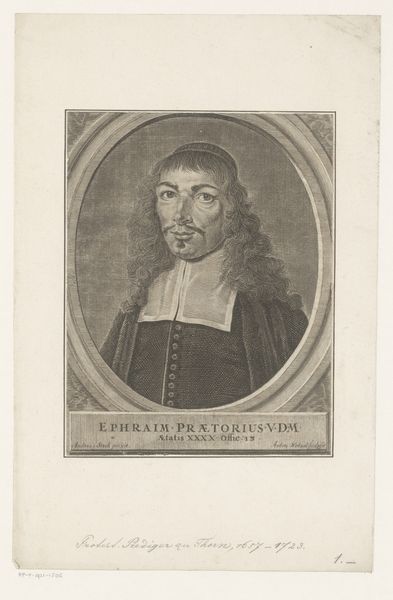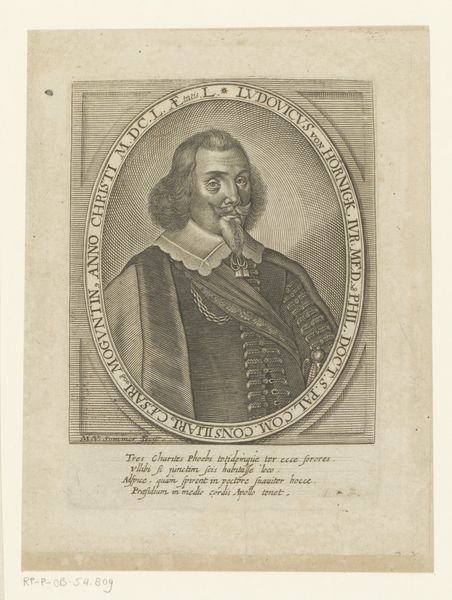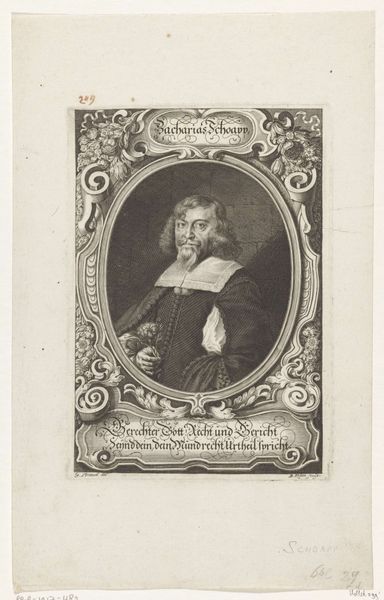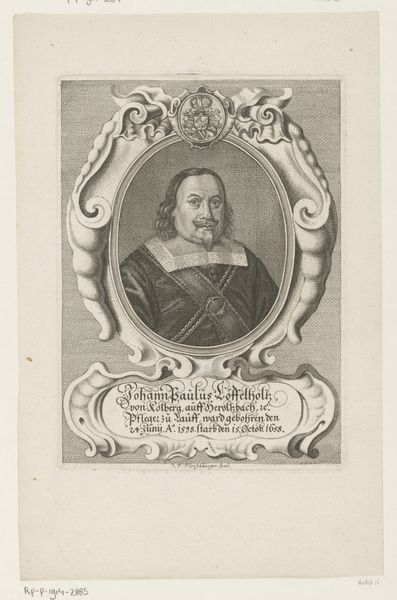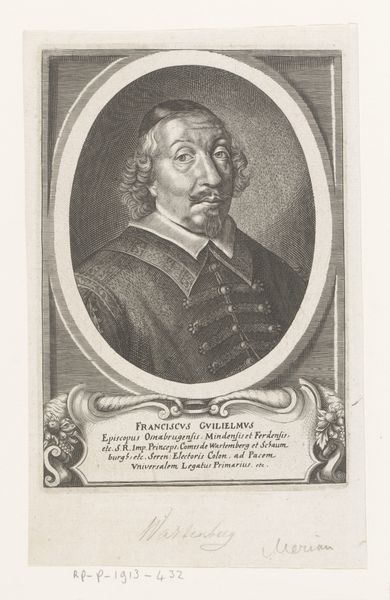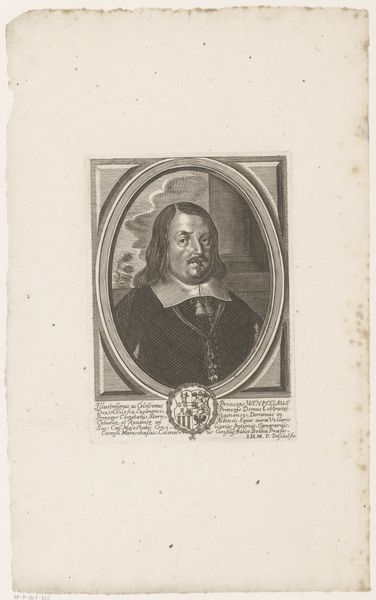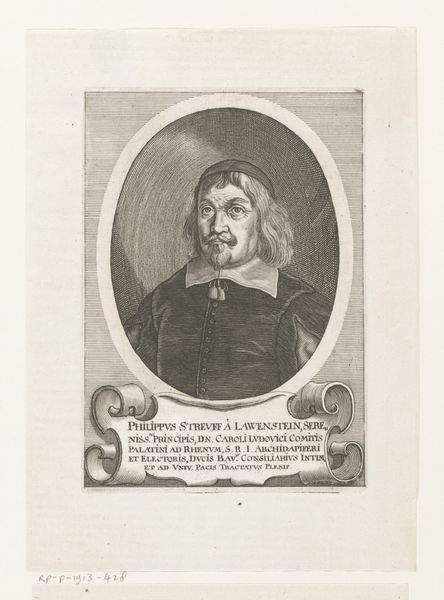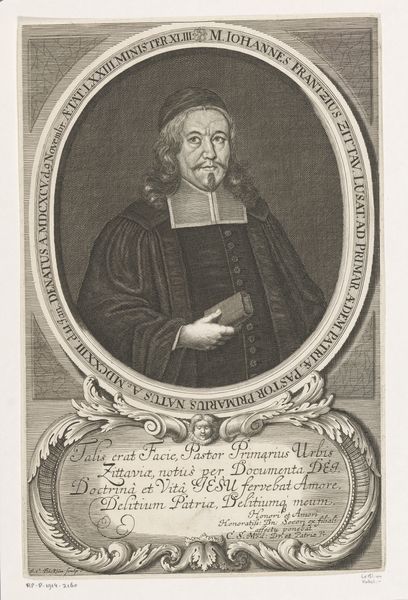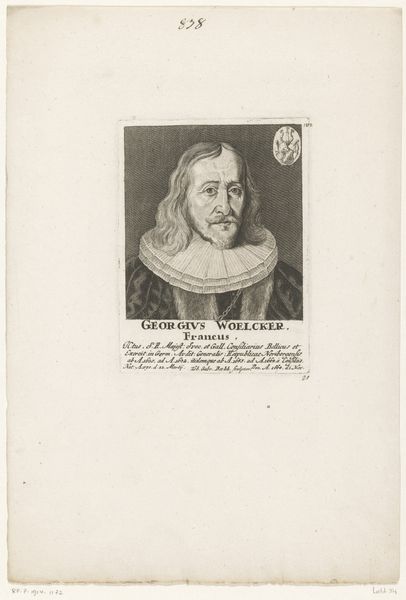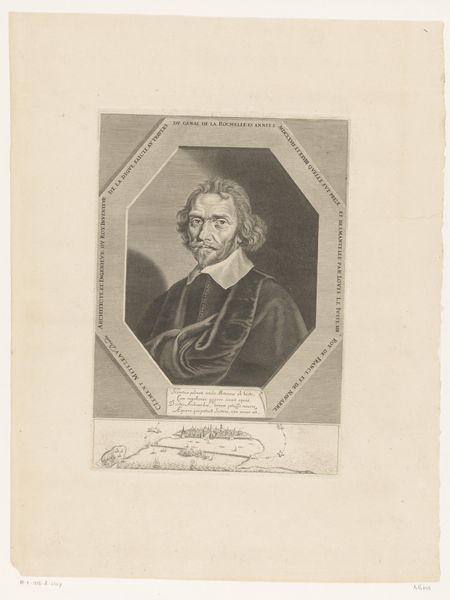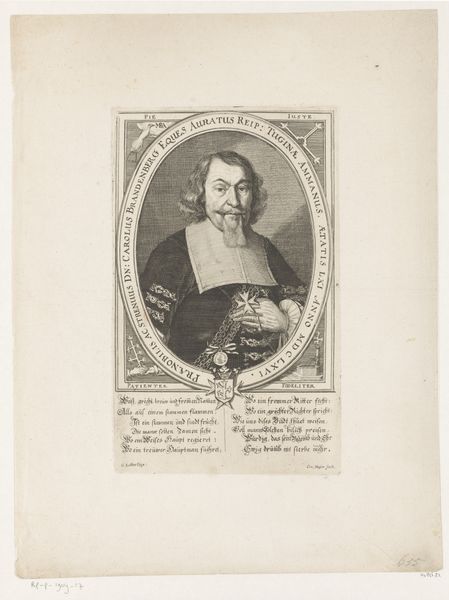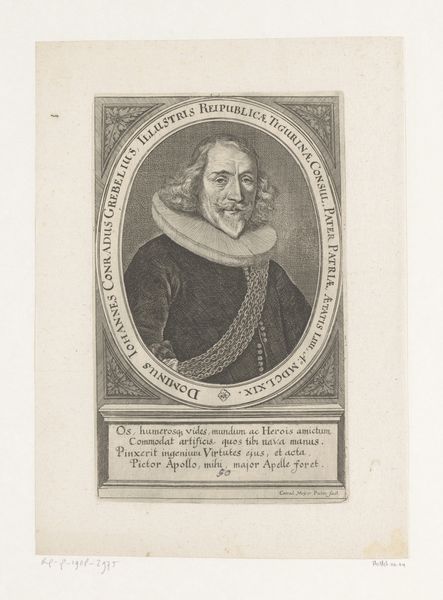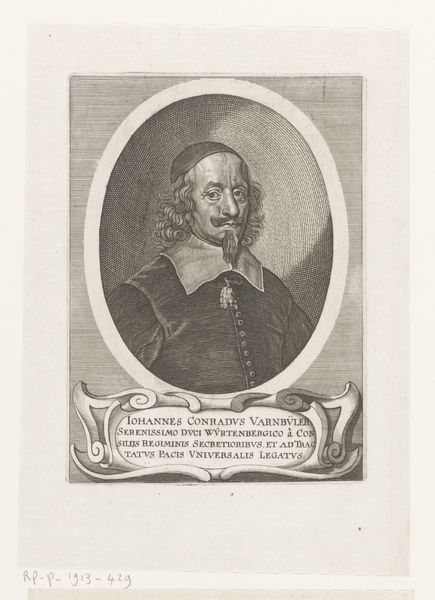
print, engraving
#
portrait
#
baroque
# print
#
line
#
engraving
Dimensions: height 150 mm, width 115 mm
Copyright: Rijks Museum: Open Domain
Curator: Here we have a portrait of Bernardo Morando, rendered in 1647, skillfully engraved by Gilles Rousselet. It’s part of the Rijksmuseum's collection. The artist uses a line technique, common in Baroque-era prints, to capture the essence of Morando. Editor: Immediately, I'm struck by the austerity of the image, even within the ornate oval frame. The shading is minimal, creating a stark, almost confrontational presence. It is a powerful and somewhat severe depiction. Curator: Indeed. As a print, it's meant to be distributed widely, accessible to a broad audience. The inscription underneath is written in Latin. This format points to its use as part of a biographical series, potentially within an academic or scholarly context. It could also serve the purpose of political propaganda. Editor: Absolutely, and it’s impossible to ignore the way his identity is carefully constructed here. Look at his collar and doublet; they are quite sober, suggestive of civic virtue or perhaps even religious conviction. What social position did he have? What was Rousselet’s connection to him? The portrayal tells us so little! Curator: Bernardo Morando was an architect in Poland. We know Rousselet's prints circulated through intellectual circles; the portrait’s function within that context—cementing reputation and contributing to his legacy—is the key thing here, not necessarily a factual likeness. The formal style aligns with the function, so its severity actually adds to the effect. Editor: Yet the emotional effect remains...muted. I wonder about the accessibility of his portrait in relation to wider questions of class and education at the time. While ostensibly 'accessible', to whom would it speak most clearly? Whose existing power structures does it mirror? Curator: It definitely invites closer consideration of art’s function within hierarchies, and how portraits reinforce visibility of certain classes of society while excluding others from view. It reveals art as not just documentation but as an agent in political visibility, as part of social performance, and reputation construction. Editor: Right. Viewing this artwork prompts us to question the choices made in the image’s construction, the socio-political landscape it inhabits, and the stories it inevitably omits in the process of elevating a single individual. Thanks for guiding us through this visual.
Comments
No comments
Be the first to comment and join the conversation on the ultimate creative platform.
